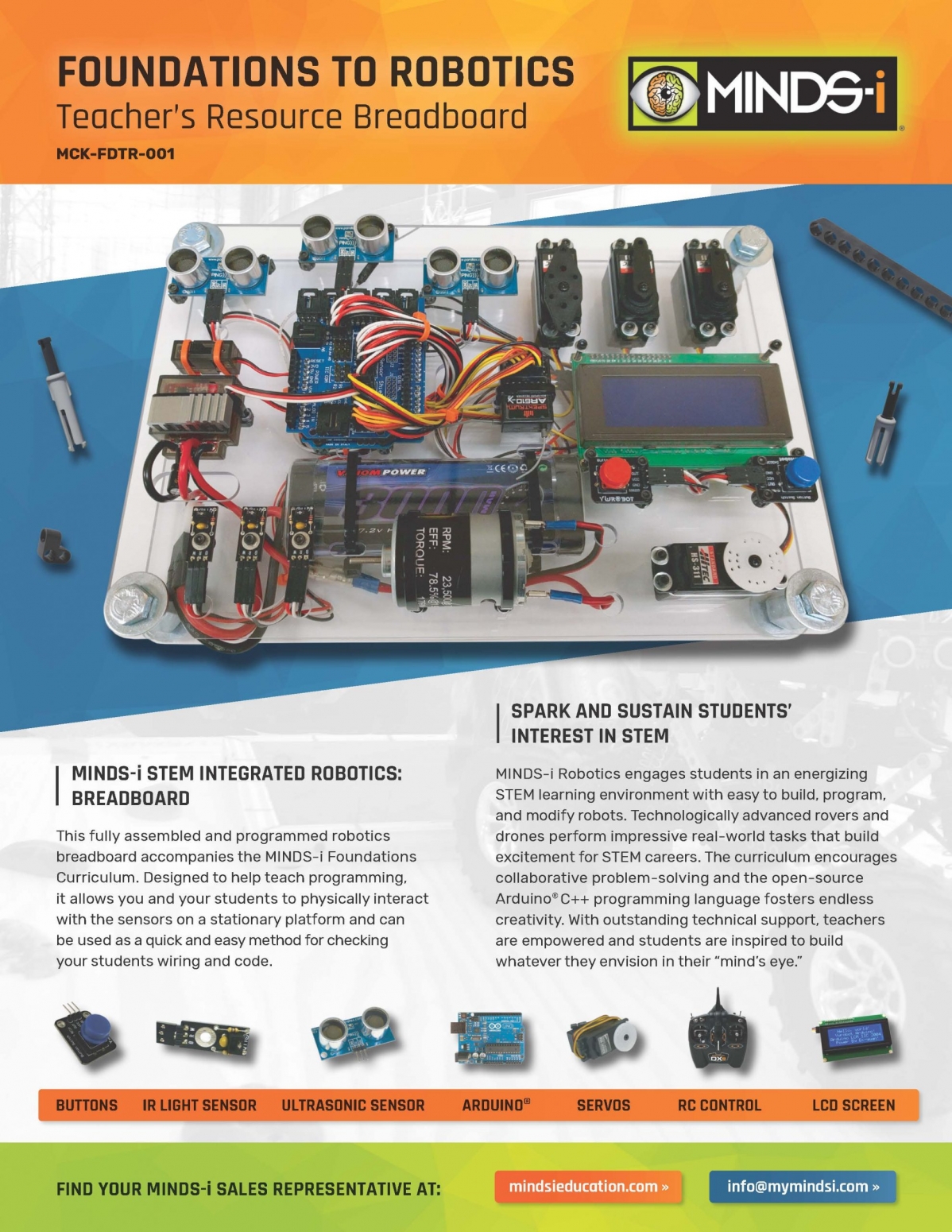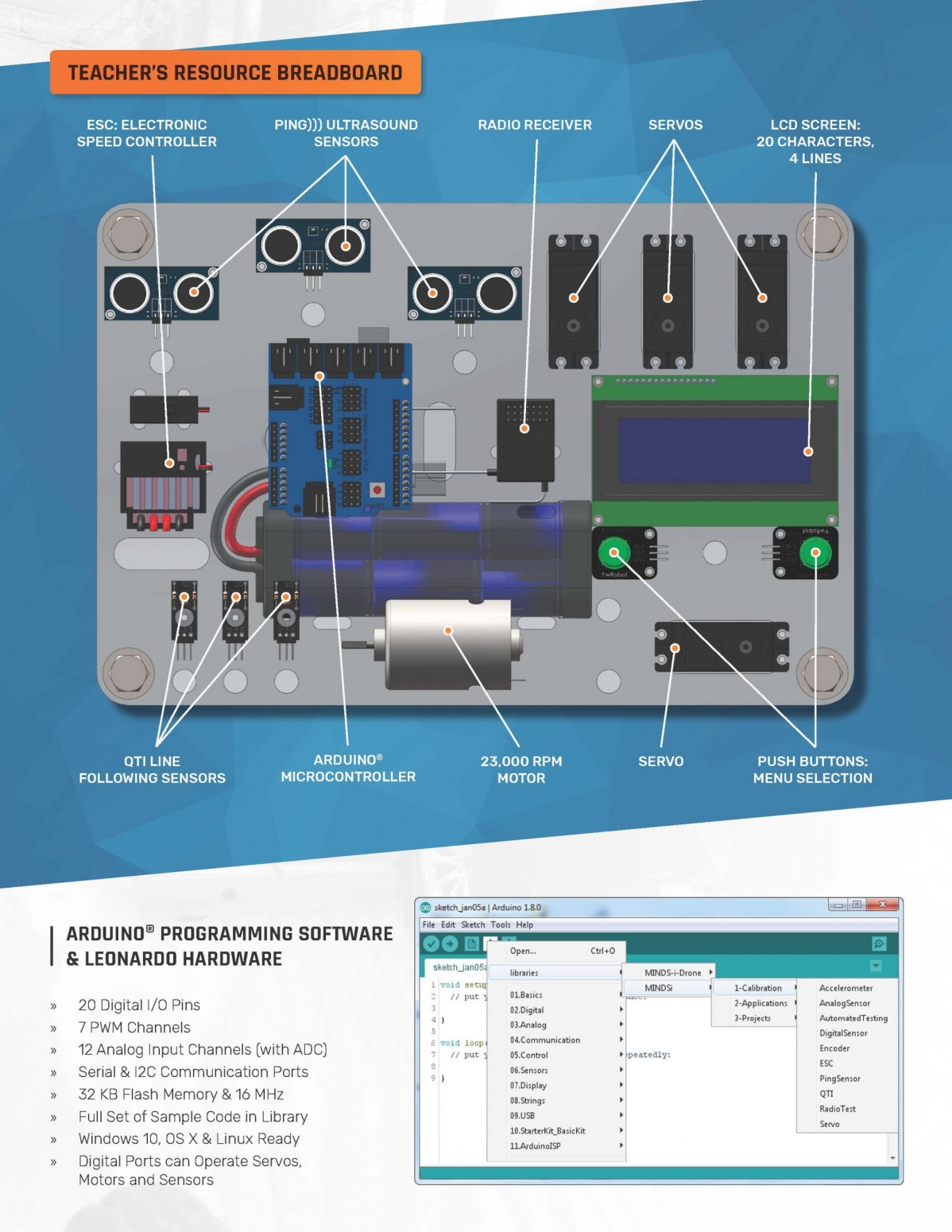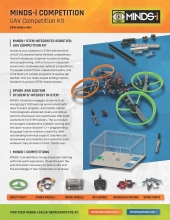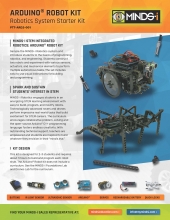STEM Robotics FOUNDATIONS Teachers Resource LAB
This fully assembled and programmed robotics breadboard accompanies the MINDS-i Foundations Curriculum. Designed to help teach programming, it allows you and your students to physically interact with the sensors on a stationary platform and can be used as a quick and easy method for checking your students' wiring and code.
Includes
- 1 Arduino Micro-Controller
- 1 Sensor Shield
- 1 6 Channel Radio Transmitter w/ Reciever
- 1 LCD Display
- 2 Push Buttons
- 4 Hitec HS-311 servos
- 3 PING))) Sensors
- 3 QTI Sensors
- 1 ESC (electronic speed controller)
- 1 23500 RPM Motor
- 1 Display board Base
• Colors may vary
Spark & Sustain Students' Interest in STEM
MINDS-i Robotics engages students in an energizing STEM learning environment with easy to build, program, and modify robots. Technologically advanced rovers and drones perform impressive real-world tasks that build excitement for STEM careers. The curriculum encourages collaborative problem-solving and the open-source Arduino® C++ programming language fosters endless creativity. With outstanding technical support, teachers are empowered and students are inspired to build whatever they envision in their “mind’s eye.”
Arduino® Programming Software & Leonardo Hardware
Each lab is designed for 2-3 students and includes 10 curriculum hours of building and data collection.







